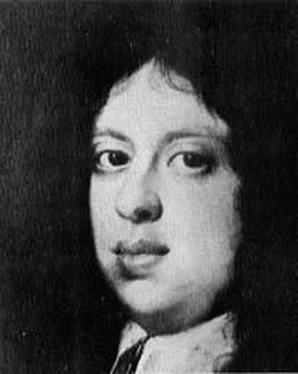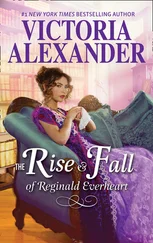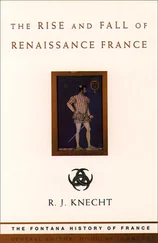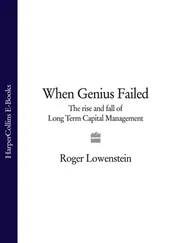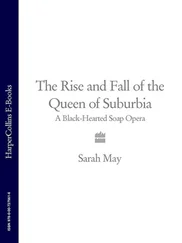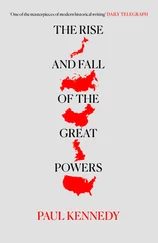Yet while Lorenzo understood the importance of marriage alliances between Florentine families, he recognized that there were good reasons for breaking the traditional rule and marrying an Orsini. Not only would he thus avoid arousing any jealousy in Florentine houses where there were marriageable daughters whom he had rejected, but he would be contriving an alliance with a family of far-ranging influence. The Orsini, soldiers and ecclesiastics by profession for countless generations, had huge estates within the Kingdom of Naples as well as north of Rome; they could raise soldiers as well as money; and in Clarice’s maternal uncle, Cardinal Latino, they had a firm foothold in the Curia. Lorenzo would naturally have preferred a better-looking and more intellectual bride from a less feudal and enclosed background. But, having succeeded in catching sight of her one day at Mass, he agreed that she was acceptable; and, once a dowry of 6,000 florins was settled, he married her by proxy in Rome, represented by a distant cousin, Filippo de’ Medici, Archbishop of Pisa.
To reconcile the Florentines to this unwelcome event, a splendid tournament was held on 7 February 1469, a tournament which was to cost 10,000 ducats and was to be one of the finest spectacles which they had ever seen, a worthy subject for that charming fifteenth-century Italian poem, Luigi Pulci’s La Giostra di Lorenzo de Medici .
The scene was the Piazza Santa Croce, where in the February sunshine the spectators, crowded onto roofs and balconies, peered down from windows and parapets to catch a glimpse of the beautiful Lucrezia Donati as she was escorted to the panoplied throne reserved for the ‘Queen of the Tournament’, and to admire the eighteen representatives of the jeunesse dorée of Florentine society who were to play the part of the knights. Preceded by heralds, standard-bearers, fifers, trumpeters, and accompanied by pages and men-at-arms, the knights paraded through the Piazza to the enthusiastic cheers of their thousands of supporters. All of them were magnificently clothed and most had elaborate armour and helmets specially made for the occasion, displays of beauty being more highly regarded on these occasions than demonstrations of reckless courage and strength: although Federigo da Montefeltro lost his eye in one, Italian tournaments were not the savage, bloody spectacle enjoyed in Germany.
None of the knights looked finer than Lorenzo de’ Medici, who wore a cape of white silk, bordered in scarlet, under a velvet surcoat, and a silk scarf embroidered with roses, some withered, others blooming, and emblazoned with the spirited motto, worked in pearls: LE TEMPS REVIENT. There were pearls also in his black velvet cap as well as rubies and a big diamond framed by a plume of gold thread. His white charger, which was draped in red and white pearl-encrusted velvet, was a gift from the King of Naples; another charger, which he rode for the jousting, was presented to him by Duke Borso d’Este of Ferrara; his suit of armour came from the Duke of Milan. There was a large diamond in the middle of his shield; his helmet was surmounted by three tall blue feathers; his standard bore a device of a bay tree, one half withered, the other a brilliant green with the same motto, written in pearls, that appeared on his scarf. By way of compliment to him as heir to their host rather than in true recognition of unparalleled prowess, the judges, who included the famous condottiere , Roberto da Sanseverino, awarded Lorenzo the first prize and presented him with a helmet inlaid with silver and surmounted by a figure of Mars.
Four months later, in June 1469, Clarice Orsini, whom this great tournament had been designed to honour, arrived in Florence for the wedding celebrations. There were to be no less than five huge banquets at the Medici Palace where for weeks past presents of game and poultry, wine and wax, cakes and jellies, sweetmeats, marzipan and sugared almonds had been arriving from all over Tuscany, and where row upon row of tables were set out along the loggia and in the courtyard and gardens of the palace. The celebrations began on the Sunday morning when the bride, who had been escorted from Rome by Giuliano, emerged from the Palazzo Alessandri in the Borgo San Piero riding the white horse that the bridegroom had been given by the King of Naples. 3Followed by a long procession of maids-of-honour and attendants, she rode in her white-and-gold brocade dress to the Medici Palace. Here, as she entered through the archway, an olive branch – traditionally displayed as a sign that there was to be a wedding in the family – was lowered over her head to the strains of festive music from an orchestra in the courtyard. As was customary at Florentine weddings, the guests were separated according to their age and sex. At Clarice’s table in the loggia overlooking the garden were young married women; at Lorenzo’s table in the hall were young men; on the balcony above the loggia, Lucrezia presided over the banquet for the older women; while the men of Piero’s generation and their elders dined in the courtyard in the middle of which were big copper coolers full of Tuscan wine. Each dish was heralded by a flourish of trumpets, and, though the ‘food and drink were as modest and simple as befitted a marriage’, it was estimated that by the time the last banquet was over five thousand pounds of sweetmeats had been consumed and more than three hundred barrels of wine – mosdy trebbiano and vernaccia – had been drunk. After the banquets the guests were entertained by music and dancing on a stage hung with tapestries and enclosed by curtains embroidered with the Medici and Orsini arms.
For three days the feasting and dancing, the displays and theatricals continued, until, on the Tuesday morning, the bride went to the basilica of San Lorenzo to hear Mass, carrying ‘a little book of Our Lady, a wonderful book written in letters of gold on dark blue paper and covered with crystal and graven silver’.
How beautiful is youth – as Lorenzo wrote in one of his poems – youth which is so soon over and gone; let him who would be happy, seize the moment; for tomorrow may never come:
Quant’è bella giovinezza
Che si fugge tuttavia!
Chi vuol esser lieto, sia;
Di doman turn c’è certezza .
Lorenzo’s young contemporaries eagerly followed his advice. There were dances by day and firework parties at night Lorenzo himself would be up at dawn, riding out into the forest, his long-bow slung on his back. After dark, he would join groups of his friends, roaming the streets by moonlight and serenading with songs and verses the girls at the palace windows. Once, at two o’clock on a cold winter morning (Lorenzo himself was on a visit to Pisa at the time, and was told this by his friend Filippo Corsini), a great crowd of them gadiered in the snow outside the palace of Marietta, the delightful, wayward, orphaned daughter of Lorenzo di Palla Strozzi. By the light of flaming torches, and with much singing, shouting, blowing of trumpets and piping of flutes, they began hurling snowballs at her window. Marietta threw it open;
and what a triumph when one of the besiegers succeeded in flinging snow upon the maiden’s face, as white as the snow itself… Moreover, Marietta herself, so graceful and so skilled in this game, and beautiful, as everyone knows, acquitted herself with very great honour.
The early years of Lorenzo’s inheritance were notable in Florence for a succession of entertainments: pageants, tournaments, masques, spectacles and parades; musical festivals, revels, dances and amusements of every kind. For generations, indeed, Florence had been famous all over Europe for such festivities. No city had more spectacular nor more numerous public entertainments. Thanks to the statutes of the various trade guilds there were no more than about 275 working-days in a year, so that the people had plenty of opportunity to enjoy themselves. There were carnivals, horse races and football games, dances in the Mercato Vecchio, mock battles in the Piazza Santa Croce and water displays beneath the bridges of the Arno. Sometimes the Piazza della Signoria would be turned into a circus or a hunting-field; wild animals would be let loose; boars would be goaded by lances; and the Commune’s lions would be brought out of their cage behind the Palazzo and incited – rarely successfully – to set upon dogs. On one occasion at least these escapades got out of hand: three men were killed by a rampaging buffalo, and afterwards a mare was set loose among stallions, a sight which one citizen thought the ‘most marvellous entertainment for girls to behold’, but which in the opinion of another, more respectable diarist, ‘much displeased decent and well-behaved people’.
Читать дальше
